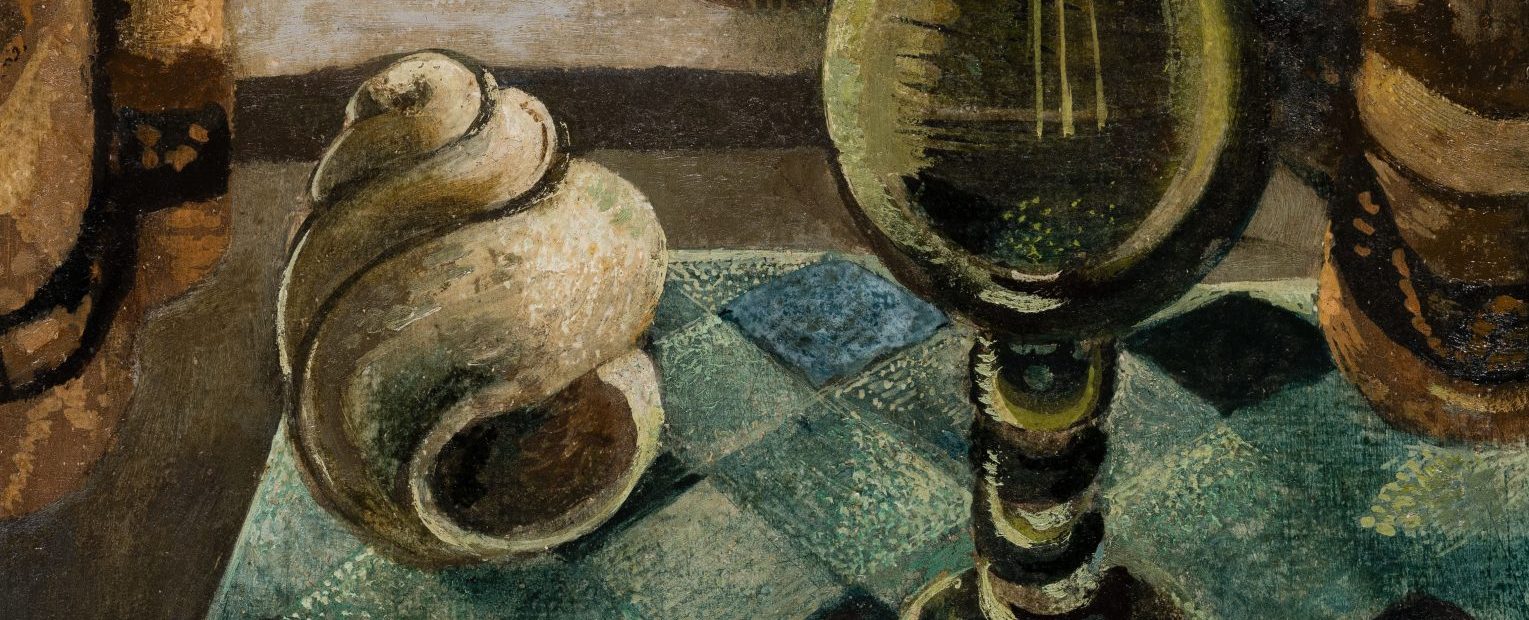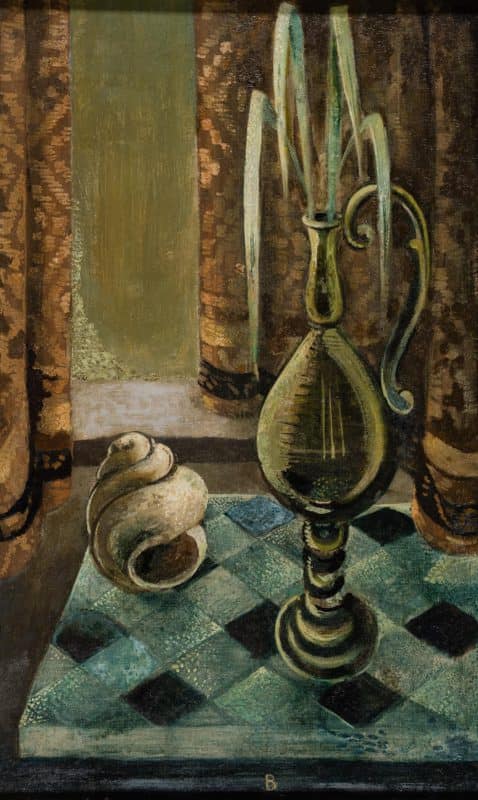

At his father’s request, Brockmann initially did a two-year architectural apprenticeship; he then also did an apprenticeship as an ornamental painter, which he completed in 1922. During his training, he came into contact with the artists’ group “Stupid” in 1917 through the architect Wilhelm Kleinert, who was lodging with the Brockmann family. This group also included Marta Hegemann, Angelika Hoerle and Anton Räderscheidt, in whose studio they regularly met. Members of “Stupid” later also joined the Cologne Progressives. Brockmann moved in this circle of artists between 1922 and 1925.
After the death of his father in 1925, Brockmann had to provide for his family. In order to rid himself of the stigma of a self-taught painter, he enrolled at the Düsseldorf Art Academy in 1926. He was given a scholarship by the Johnen Foundation in Cologne, and from 1927 also had his own studio at the Academy. In 1928, Brockmann became a master student of Heinrich Campendonk. After completing his studies in 1932, Brockmann remained at the Academy and was given the task of teaching the foundation course to students. That same year, he married the sculptress Marianne Reunert and was elected to the committee of the Rhine Secession. In response to the increasing influence of the National Socialists, he also joined the German Communist Party (KPD). In the Academy itself, he argued against the wearing of swastikas and against anti-Semitic campaigns. In the face of threats from a commando of the SA, he fled with his wife to Berlin to live with her parents. He kept painting while in Berlin, though in secret. From 1933 onwards, Brockmann was active in arts and crafts, and in this capacity also took on the job of workshop manager for the class in conservation and monumental painting at the United State Schools of Fine and Applied Arts in Berlin. From 1942 to 1945, Brockmann was compelled to do military service. He was captured by the Americans, was released in 1946, and settled in Hof an der Saale, where he ran a book-printing company and a lithographic institute. In 1952, he and his family moved to Kiel, where he was initially appointed the city’s cultural officer, then later taught nature studies and painting at the Muthesius Vocational School, where he was given the title of professor in 1975.
